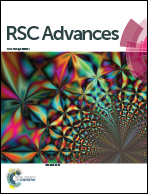The effect of anode support on the electrochemical performance of microtubular solid oxide fuel cells fabricated by gel-casting
Abstract
Different cell configurations of anode-supported microtubular solid oxide fuel cells (mT-SOFCs) using samaria-doped ceria (SDC) as the electrolyte were fabricated. Several cells were processed varying the porosity and wall thickness (outer diameter) of NiO–SDC tubular supports. Suitable aqueous slurry formulations of NiO–SDC for gel-casting were prepared using agarose, as a gelling agent, and sucrose, as a pore former. The subsequent NiO–SDC anode functional layer (AFL), the SDC electrolyte and the La0.6Sr0.4Co0.2Fe0.8O3−δ–SDC cathode were deposited by spray-coating. Pre-sintering temperatures of the supports were optimized from linear shrinkage curves, thus obtaining after co-sintering, a dense electrolyte without anode-electrolyte delamination. Electrochemical characterization of mT-SOFC cells fabricated by agarose gel-casting is reported by the first time. The cell with a support of 2.6 mm diameter, 380 μm wall thickness, an active area of 1 cm2 and added porosity, using 10 wt% sucrose, achieved a maximum power density of about 400 mW cm−2 at 650 °C.


 Please wait while we load your content...
Please wait while we load your content...